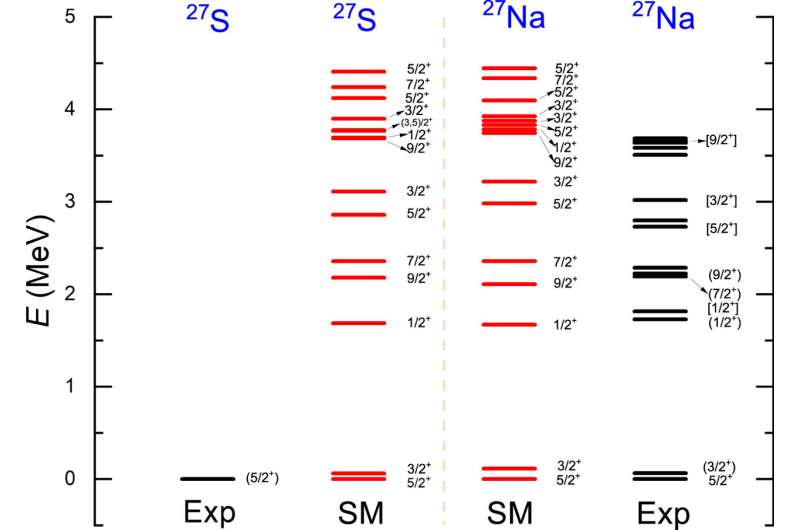This article has been reviewed according to Science X's editorial process and policies. Editors have highlighted the following attributes while ensuring the content's credibility:
fact-checked
peer-reviewed publication
trusted source
proofread
Scientists derive new reaction rate for rapid proton capture process

Type I X-ray bursts are the most frequent types of thermonuclear stellar explosions in the galaxy. As the key nucleosynthesis process in X-ray bursts, the rapid proton capture process (rp-process) is always the important scientific frontier in nuclear astrophysics. The 26P(p,γ)27S reaction is one of the key nuclear reactions in rp-process, and its accuracy is crucial for comprehensively understanding the reaction path of the rp-process in X-ray bursts.
Recently, an international nuclear astrophysical team led by Hou Suqing from the Institute of Modern Physics of the Chinese Academy of Sciences successfully derived the 26P(p,γ)27S reaction rate based on the latest nuclear mass of sulfur-27. The study is published in The Astrophysical Journal.
Other institutions involved in this study include the Hungarian Academy of Sciences (Hungary), the University of Hull (UK), Michigan State University (US), and Texas A&M University-Commerce (US).
Scientists found that the 26P(p,γ)27S reaction rate is dominated by a direct capture reaction mechanism rather than resonant capture. They discovered that the new rate is overall smaller than the other previous rates from the statistical model by at least one order of magnitude in the temperature range of X-ray burst interest.
The rp-process calculations showed that the ratio of isotope abundances of sulfur-27/phosphorus-26 when adopting the new rates is smaller by a factor of 10 than that using the rates from the Joint Institute for Nuclear Astrophysics reaction rate database (Reaclib). In addition, the accumulated material on the phosphorus-26 nucleus is larger than that on sulfur-27 during the whole rp-process episode.
More information: S. Q. Hou et al, New 26P(p,γ)27S Thermonuclear Reaction Rate and Its Astrophysical Implications in the rp-process, The Astrophysical Journal (2023). DOI: 10.3847/1538-4357/accf9c
Journal information: Astrophysical Journal
Provided by Chinese Academy of Sciences





















